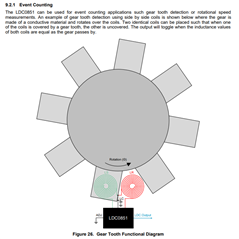Is it possible to use this device as a high speed event measurment sensor, I have seen an image of this in a TI presentation but cant find any more application details on this. If so what is the speed limitation of the device and do you have any details on what type and size of coil would be required?
does the target just. Red to be conductive, are there any other restrictions?





